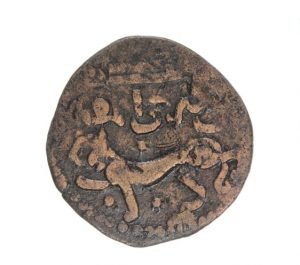A selection of 2,000 coins, dating from the Ilkhanid and Timurid eras, has undergone restoration at the Zolfaghari Museum of Zanjan in west-central Iran.
The coins have been unearthed during several seasons of excavation conducted in and near the UNESCO-designated Soltaniyeh (the mausoleum of Oljaytu) in Zanjan province, the provincial tourism chief announced on Thursday.

Meaning “Town of the Sultans”, Soltanieh was briefly the capital of Persia’s Ilkhanid dynasty (a branch of the Mongol dynasty) during the 14th century. According to UNESCO, the Mausoleum of Oljaytu is an essential link and key monument in the development of Islamic architecture in central and western Asia.
Detecting diverse layers of corrosion, removing extra layers, and receiving chemical and mechanical treatments are parts of the restoration operation being performed on the coins by experts at the laboratory of the museum, Amir Arjmand said.
Furthermore, it includes surface cleaning, dust removal, documentation progress as well, the official said.
“Metalworks including coins face critical environmental conditions when they are unearthed…. So that their corrosion process accelerates once again.”
“They may suffer new damage if they are not protected in proper time. So, restoration measures are of very high importance,” the official explained.
The Timurid dynasty, self-designated as Gurkani, was a Sunni Muslim dynasty or clan of Turco-Mongol origin descended from the warlord Timur (also known as Tamerlane). Ilkhanid dynasty, also spelled Il-Khanid, was a Mongol dynasty that ruled in Iran from 1256 to 1335. Il-khan is Persian for “subordinate khan.”
The mausoleum is one of Iran’s must-visit destinations for those interested in traditional Persian and genuine Islamic architecture. It is surmounted by one of the largest brick domes in the globe, though some mistakenly refer to it as “the largest dome in the world”.
The extremely rich interior of the mausoleum displays glorious glazed tiles, brickwork, marquetry, stuccowork, frescoes, and vivid illustrations, amongst other decorations.
Hulegu, a grandson of Genghis Khan, was given the task of capturing Iran by the paramount Mongol chieftain Mongke. Hulegu set out in about 1253 with a Mongol army of about 130,000. He founded the Il-Khanid dynasty in 1256, and by 1258 he had captured Baghdad and all of Iran, according to Britannica.
The Il-Khans consolidated their position in Iran and reunited the region as a political and territorial entity after several centuries of fragmented rule by petty dynasties. During the reign of the Il-Khanid Maumud Ghuzun (reigned 1295–1304), the Il-Khans lost all contact with the remaining Mongol chieftains of China. Mahmud Ghuzun himself embraced Sunni Islam, and his reign was a period of Iranian cultural renaissance in which such scholars as Rashid al-Din flourished under his patronage.
Ghazan’s brother Oljeitu (reigned 1304–16) converted to Shia Islam in 1310. Oljeitu’s conversion gave rise to great unrest, and civil war was imminent when he died in 1316. His son and successor, Abu Sa’id (reigned 1317–35), reconverted to Sunni Islam and thus averted war.
In about 220 CE the Sasanian dynasty of Iran introduced the concept of thin flan coins, issues that were struck in relief on both sides. The Muslim conquest of Persia, also known as the Arab conquest of Iran, led to the fall of the Sasanian Empire of Iran (Persia) in ca. 651 and the eventual decline of the Zoroastrian religion. The rise of Muslims coincided with an unprecedented political, social, economic, and military weakness in Persia.
The conquering Muslims at first mimicked the coinage of their predecessors. In the western provinces, they issued gold and copper pieces imitated from contemporary Byzantine coins, modifying the cross on the reverse of the latter somewhat to suit Muslim sensibilities. In the eastern provinces, the Arab governors issued silver dirhams that were copies of late Sasanian coins (mostly of those of Khosrow II; with the addition of short Arabic inscriptions on the margin and often the name of the Arab governor in Pahlavi; even the crude representation of the fire altar was retained.


